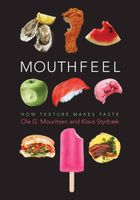Advertisement
Chemesthesis
Appears in
By Ole Mouritsen and Klavs Styrbæk
Published 2017
Describes the sensitivity of the skin and mucous membranes to chemically induced reactions that cause irritation or pain and that may damage cells and tissues. In the mouth this is registered as a sharp taste when we eat chile peppers, which contain capsaicin, black peppercorns, which contain piperine, or horseradish and mustard, which contain isothiocyanate. As the endings of the trigeminal nerves (the fifth paired cranial nerves) are the ones affected, chemesthesis is sometimes referred to as the trigeminal sense. Sensations of temperature are related to chemesthesis.



